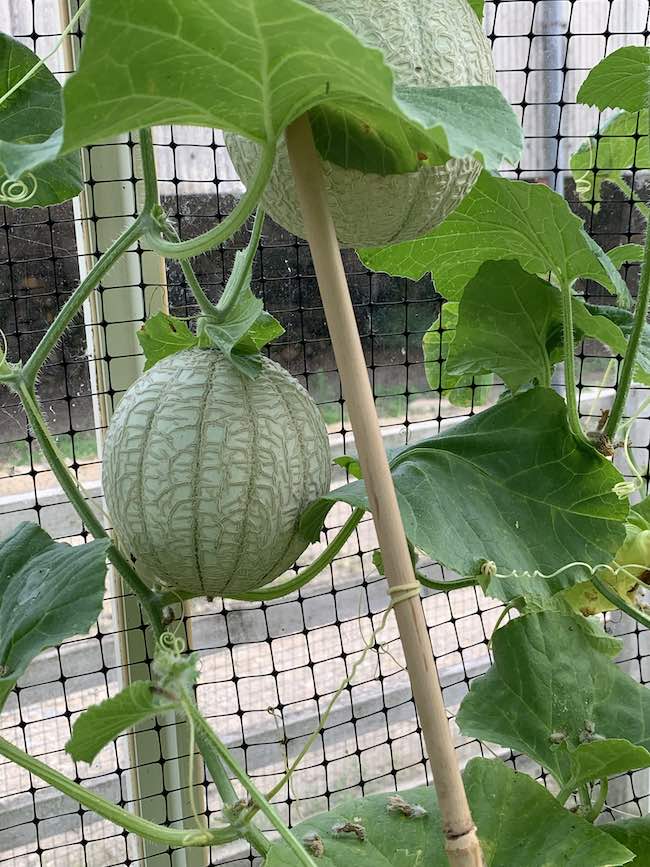Growing Melons is an interesting gardening challenge

If you are up for a challenge growing your own melons in a greenhouse can be a challenging and rewarding gardening project. Follow the GardenAdvice Team as we produce fruit and vegetables this year.
Sow the seeds inside between mid-April and end of May, sow directly into 3-inch pots using standard potting compost. Once the seedlings have two true leaves it is time to plant them out in a cold glasshouse into grow bags or preferably directly into the well-prepared ground with lots of organic matter in the soil. (Composted grass clippings and straw is idea if trenched in using the double digging method.)
Create some support, this can be a single line of string tied to the supports in the glasshouse roof and secured in the ground with a peg next to the base of the melon or the GardenAdvice team often uses a fan trellis which is a simple and reusable next season. As the melon starts to grow you should tie the strongest shoot to the support and pinch out the side shoots which grow from the main stem. Once the stem has reached the top of the support pinch out the leading shoot. This will make the plant concentrate on the formation of fruits.
Watering holds the key to successful melon growing. The best way to water is with a drip irrigation system. You need to water so that the plant never gets wet. Other methods that have been employed in the past have included inserting a 3-inch pipe when planting so you can water directly to the roots with a watering can. Over watering can cause the fruit to split so try to keep them moist constantly moist but not wet.
Float like a butterfly and pollinate like a bee. Once the flowers have formed you should take a small paintbrush and lightly brush each flower in turn to aid pollination. This job is best carried out mid-day when the humidity is high. After 2 or 3 days you should remove the male flowers (the females have a miniature melon growing behind the flower)
Safes guard your efforts. As soon as the fruits reach the size of tennis balls you need to use string nets to support them. As the summer progresses and the fruits reach full size remove a few leaves to allow the fruit to ripen.
Feeding is simple a weekly feed with a liquid tomato fertiliser once the fruit starts to grow
Glasshouse conditions in high summer need to be kept humid on the hottest days by watering the path early in the morning or by standing a bucket of water in the glasshouse.
Growing melons is a challenge but the rewards are well worth the effort